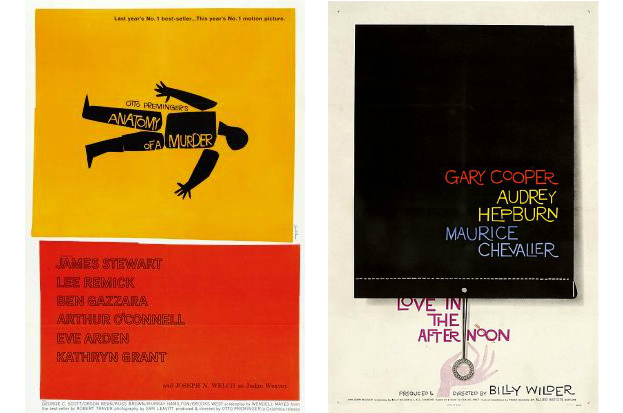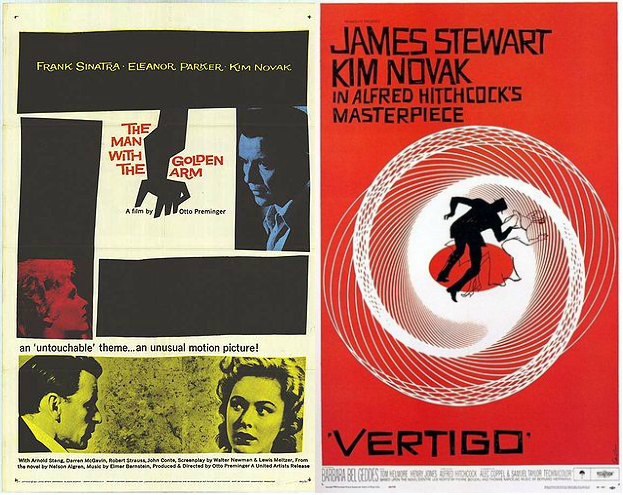Graphic Designer Changed What I Wrote
Saul Bass might be the single most accomplished graphic designer in history. Working in the mid 20th century, when the importance of graphic design was just on the upswing, Bass branded a staggering array of major corporations with his iconic, minimal designs.
Bell, Kleenex, AT&T? All Bass. For about 50 years, if you were looking for a clean, thoughtful design that was made to last, this was the man you called.

Bass' designs for Bell (1969), Kleenex (1980s) and AT&T (1986)
Logo design is not all Bass is known for. In fact, logos form the lesser part of Bass' artistic legacy. Read on for a look at one of the most illustrious graphic design careers to date.
Getting his start
Bass was born in 1920 in New York City, to Jewish immigrants. A creative child, he drew constantly. For college, he attended night classes at the Art Students League where he had the fortune of studying under György Kepes, a master of the functional Bauhaus aesthetic.
Graphic design in film
In the 1940s, Bass left New York for California. He worked mostly for advertising until his first major break: a poster for the 1954 film, Carmen Jones. The filmmakers were so impressed by his poster work, they invited him to design the title credits as well. This turned out to be a game changing decision.

Bass' poster designs for Anatomy of a Murder (1959) and Love in the Afternoon (1957)

Bass' poster designs for The Man with the Golden Arm (1955) and Vertigo (1958)
Bass stepped up the sophistication of movie posters with his distinctive minimal style and he completely revolutionized the role of title credits in films. Traditionally, credits were static and drab. They were considered so unimportant, they would actually be projected onto the closed curtains which would only open for the first official scene of the movie.
Bass, however, was committed to injecting life into these graphics, making them as much a part of the cinematic experience as anything else. Introducing his signature "kinetic type," Bass' letters dashed and moved across the screen and frequently incorporated images other than text.
Titles became a spectacle to be seen. Film reels with Bass credits were delivered to movie theaters along with a note: "projectionist – pull curtain before titles."
Bass' famed title credits for North By Northwest (1959)
Bass went on to create dozens of iconic film posters and title credits. His final projects before his death in 1996 were credits for four Martin Scorsese films: Goodfellas (1990), Cape Fear (1991), The Age of Innocence (1993) and Casino (1995).
Bass' title credits for Goodfellas (1990)
Logos made to last
The average lifespan of a Saul Bass logo is a whopping 34 years. Some of his work have yet to be replaced, like the absolutely brilliant designs for Kosé Cosmetics (1959), Kibun (1964), Warner Communications (1972), Girl Scouts (1978, with a slight modification made in 2010) and Geffen Records (1980). With designs as solid, thoughtful and timeless as these, they might never have to be.

(from left) Bass' designs for Kosé Cosmetics (1959), Kibun (1964) and Warner Communications (1972)

Saul Bass' original 1978 Girl Scouts logo (left) and the 2010 variation (right), redesigned by OCD Agency

Bass' logo for Geffen Records (1980)
Logo designer William Haig recalls working with Bass on the Continental Airlines logo — the first of what Haig calls "credibility based logo design":
I came back with 1500 slides. Saul and I were in a late night meeting discussing what the Continental look meant and what inference we could make for a new Continental logo design as the beginning of a new image program. I remember Saul saying something like, "If this were Western Airlines, we would just make a 'western' looking logo complete with an 'out west look' reminiscent of cowboy gear." But this was Continental, an airline known at the time for its high service image.

Saul Bass' famed "jetstream" logo for Continental Airlines (1968)
This particular logo was ultimately replaced in 1991 but, as with all of Bass' creations, the distinctive look of the original will live on in graphic design history.
What famous designers do you like? Share in the comments!
Graphic Designer Changed What I Wrote
Source: https://99designs.com/blog/famous-design/saul-bass-graphic-designer-of-a-century/
0 Response to "Graphic Designer Changed What I Wrote"
Post a Comment